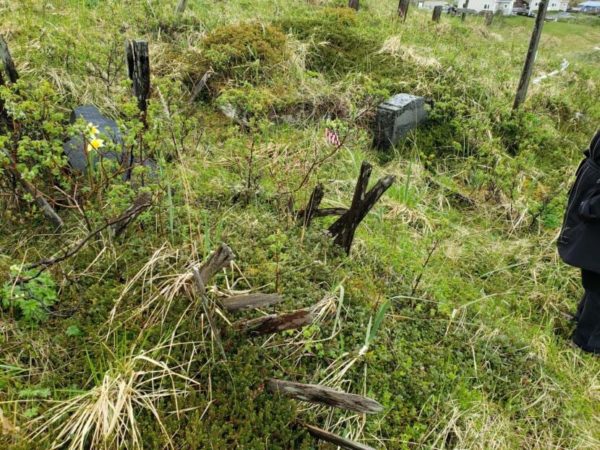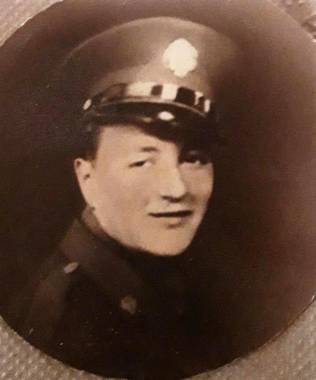
For years, a small American flag was all that marked the grave of George Fox. Now, his resting place will finally be recognized.
Every year, Unangax̂ elder Gertrude Svarny visits the Russian Orthodox cemetery in Unalaska and puts a tiny U.S. flag on an unmarked grave.
The grave is for her childhood friend, George Fox, an Unangax̂ soldier who died during World War II.
“It is very powerful that Gertrude Svarny remembered him and has taken the time to honor his memory every Memorial Day, to go up to his gravesite and to place the United States flag on his grave,” said Michael iqyax̂ Livingston, a cultural heritage specialist with the Aleutian Pribilof Islands Association. Livingston worked with others to get a grave marker for the World War II soldier.
“Here we are about 77 years later, and his sacrifice is basically gone, almost gone. Had it not been for Gertrude Svarny, it would have been completely forgotten,” Livingston said.

Fox was born in 1920 on Unga Island, off the Alaska Peninsula, about 250 miles northeast of Unalaska. He joined the U.S. Army in January of 1941 and served in the military police during World War II.
The German occupation of Rome began in September 1943, and Allied forces led an offensive campaign that would eventually capture the Italian city.
Fox was killed in action in Ardea, Rome, Italy — just three days before the American forces took possession of the city on June 4, 1944. He’s the only known Aleut/Unangax̂ soldier killed in action during World War II.
When Fox’s body returned to Unalaska, Livingston said his funeral service was at the Russian Orthodox Church.
“He’s buried right next to his mom,” Livingston said. “His mom was Russian Orthodox, and he was Russian Orthodox, too.”
The grave of his mom, Emma Fox, is marked with a large solid black stone with her name on it.
And at 91, Gertrude Svarny, an accomplished Unangax̂ artist and culture bearer, continues to visit the grave of her friend.
But he never received a marker. For more than 70 years, Fox’s grave has been unmarked. His name is also missing from World War II killed in action memorials in Alaska.
“We really don’t know why this grave was not marked,” Livingston said. “Times were different back in the 1940s. It was basically open-faced racism against people of color, including soldiers of color. And so that might have been a play in it.”
“When you compare Private George Fox’s grave, two other graves — for example, out at Fort Richardson National Cemetery — those graves are immaculate lawns and very beautifully placed stones and flags and sidewalks,” Livingston said.
Livingston and others worked for at least five years to get Fox a marker. They managed to get some records from the National Archives to apply for one.
“We were able to enlist the help of U.S. Sen. Dan Sullivan. And since Sen. Sullivan’s office got involved and helps us, has helped us in the project, we have finally able to get some resolution from the Veterans Affairs,” Livingston said.
This May, the U.S. Department of Veterans Affairs approved the order of a gravestone for Fox.
“We’re just grateful that the stone is being ordered, and hopefully it will arrive in Unalaska soon,” Livingston said.
Livingston estimates the stone will arrive around mid-July. This will likely be the last Memorial Day without a marker for George Fox — besides a small U.S. flag from a friend.




